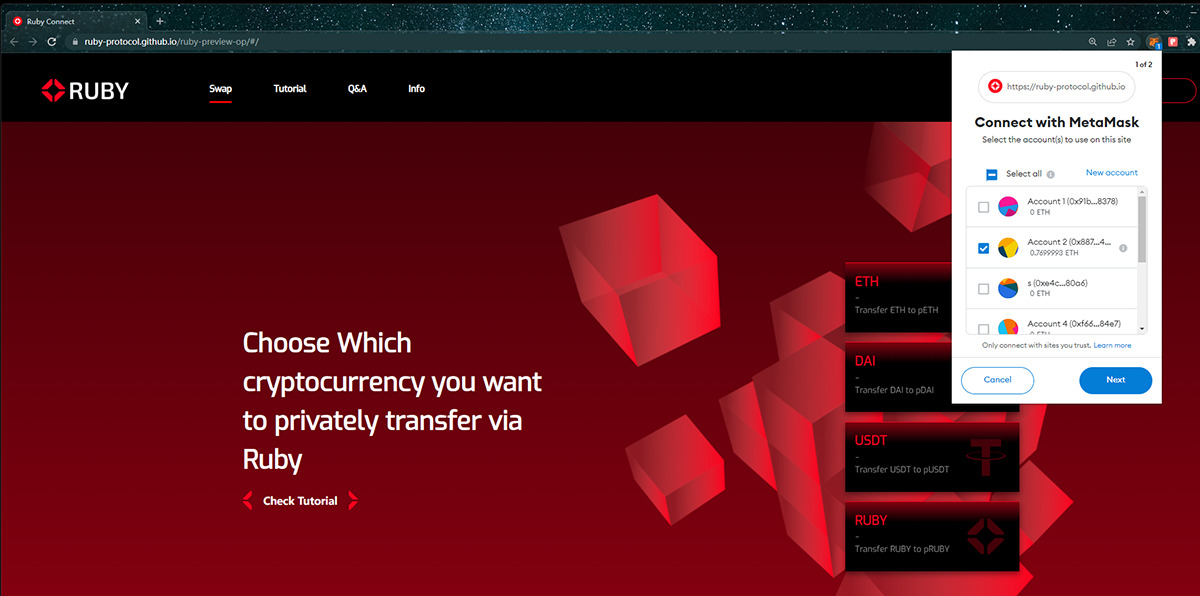Ruby Connect

Ruby Connect is Ruby Protocol's Proof of Concept, which is designed as a Layer 2 application that aims to address the most fundamental need of crypto space, which is to enforce value transfer with privacy and to enable cross-chain privacy-preserving access control while protecting your assets and on-chain data.
We primarily focused on developing technical demonstrations to showcase how our solutions can be executed and utilized in real-world environments to help with the expanding data management needs.
With this version of Ruby Connect, users can use Ruby Protocol to enforce access control and privacy across different blockchains. In addition, with experience in building products with zero-knowledge algorithms and zkSNARK techniques on Ethereum, our team is confident in building state-of-the-art privacy solutions and accommodating more needs in the coming iterations.
With Ruby Connect, we demonstrate how we can enable transactions with built-in privacy. After several rounds of development optimizations to improve user experiences, we reduce the underlying logic to private minting on the contract level and at a ratio of 1:1.
Below are the technical features and components included in the current version:
- Malleable: We consider the current Ruby Connect to be very plastic in the sense that it is a first-step technical foundation on which we can build our future private data management system.
- Crypto-native: We start building it from the most fundamental crypto need - value transfer. We believe this is the right starting point and a critical need to address well.
- Mint: With Ruby Connect, users can convert any token into an anonymized version, which is the prerequisite of a private transaction and an essential component in our access-control design.
- Redeem: In return, users can convert the anonymized token back into its native form and use them however they see fit.
- Transfer: When transferring tokens using Ruby Connect, this exchange will be executed anonymously, concealing the identity of both sender and receiver as well as the amount being executed.